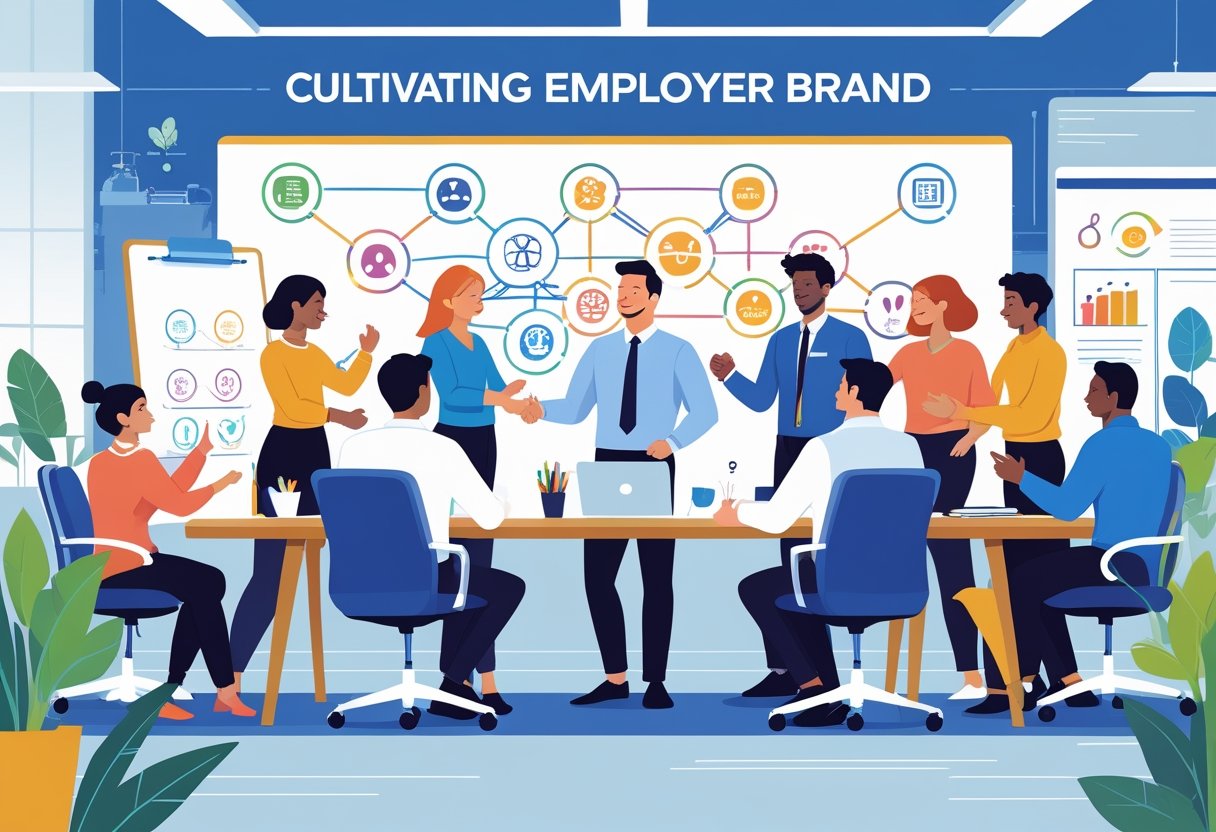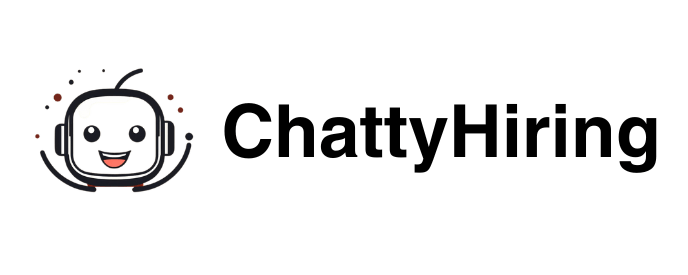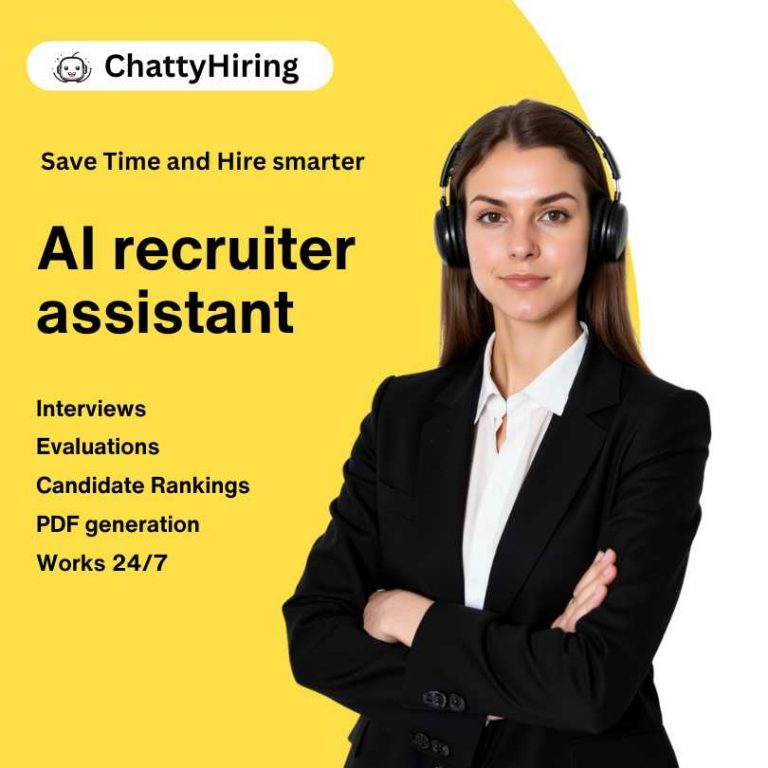Starting a Head of Talent role comes with unique challenges that require immediate attention to build a foundation for long-term success. New leaders in this position must balance strategic planning with operational excellence while establishing credibility across the organization.

The first 90 days in a Head of Talent role are crucial for attracting top performers, retaining key employees, and aligning talent strategies with business goals. Understanding the role means overseeing recruitment operations, developing attraction strategies, and ensuring hiring practices fit company objectives.
Success hinges on building strategic talent acquisition foundations, strengthening employer branding, implementing robust talent management systems, and using data-driven approaches to create inclusive workplaces. These elements combine to drive organizational growth and employee satisfaction.
Building Strategic Talent Acquisition Foundations

A Head of Talent must set up systematic recruitment processes and measurable hiring standards to establish effective talent acquisition capabilities. These operational foundations shape the quality of hire and overall success of hiring initiatives.
Developing a Scalable Recruitment Process
The Head of Talent needs to design standardized hiring workflows that can flex with varying requisition volumes. This includes consistent stages from job requisition to offer acceptance.
A scalable process starts with clear job definitions and approval workflows. Each position should have documented requirements and stakeholder sign-offs before posting.
Key process components include:
- Standardized job posting templates
- Interview scorecards and evaluation criteria
- Reference check procedures
- Offer approval workflows
The talent acquisition team should leverage an ATS that automates tasks like candidate screening and interview scheduling. This tech reduces manual work and keeps candidate communications consistent.
Documenting processes helps prevent bottlenecks when hiring ramps up. New team members can follow established procedures without tons of training.
Regularly reviewing processes helps spot inefficiencies. Heads of Talent should track where candidates exit the funnel and make adjustments as needed.
Defining Talent Acquisition and Hiring Metrics
Measuring recruitment effectiveness means defining metrics that align with business priorities. Heads of Talent should establish baseline KPIs before rolling out new strategies.
Essential hiring metrics include:
| Metric | Purpose | Target Range |
|---|---|---|
| Time to fill | Measures process efficiency | 30-45 days |
| Cost per hire | Tracks recruitment expenses | $3,000-$5,000 |
| Quality of hire | Assesses long-term success | 90% retention at 1 year |
| Offer acceptance rate | Indicates employer appeal | 80-90% |
Quality of hire is key for long-term impact, tracking new employee performance and retention after 6-12 months.
Source effectiveness tracking shows which channels bring in the best candidates. Data-driven recruiting helps optimize spend and focus on productive channels.
Heads of Talent should review these metrics monthly and adjust strategies as trends emerge.
Optimizing Candidate Experience
Candidate experience has a direct impact on employer brand and offer acceptance rates. Every step shapes how candidates view your organization.
The hiring process should be transparent, with clear timelines and regular updates—even if decisions are delayed.
Critical experience touchpoints:
- Simple application process
- Flexible interview scheduling
- Timely, quality feedback
- Fast, clear decision communication
Mobile-friendly applications are a must since many candidates apply via phone. Complicated forms or excessive requirements scare away excellent talent.
Interview prep materials help candidates put their best foot forward. Share role details, interview formats, and company info upfront.
Rejected candidates should get personalized feedback when possible. Positive candidate experiences keep doors open for future talent and protect your employer reputation.
Heads of Talent should survey candidates regularly for feedback. Both successful and unsuccessful candidates offer valuable insights into your process.
Cultivating Employer Brand and Company Culture

A Head of Talent needs a clear employer branding strategy that reflects company values and builds an authentic workplace culture. Every candidate touchpoint is a chance to boost talent attraction and retention.
Establishing a Strong Employer Branding Strategy
Define what makes your company unique as an employer. Start with a compelling employer value proposition (EVP) that highlights benefits, growth opportunities, and culture.
Key components of an effective employer brand:
- Clear communication of company values and mission
- Authentic employee testimonials and success stories
- Competitive compensation and benefits
- Professional development opportunities
Keep your brand message consistent across all platforms—social media, job postings, and your company site.
Current employees play a big role in shaping an authentic brand. Their stories and feedback add credibility.
Regularly measure brand perception with employee surveys and candidate feedback to keep improving.
Aligning Company Culture with Talent Strategies
Company culture is a major factor in talent acquisition and retention. Heads of Talent should make sure cultural values are woven into people strategy and policies.
Culture alignment starts with recruitment. Job descriptions should clearly share cultural expectations and what your work environment is really like.
Essential culture elements to highlight:
- Work-life balance policies
- Diversity and inclusion initiatives
- Team collaboration styles
- Performance recognition programs
Train your hiring team on cultural fit assessment so they can evaluate candidates beyond just technical skills.
Showcasing authentic company culture attracts candidates who share your values, reducing turnover and boosting satisfaction.
Regularly assess your culture through employee feedback to spot gaps and strengthen alignment with talent strategies.
Enhancing the Hiring Experience
Every candidate touchpoint shapes how people see your employer brand. It’s important to create a seamless, professional hiring process that reflects your values.
Communication timing and quality are huge. Candidates want regular updates and clear next steps.
Critical hiring experience touchpoints:
| Stage | Key Actions |
|---|---|
| Application | User-friendly portal, fast confirmation |
| Screening | Prompt response, clear expectations |
| Interview | Professional setting, prepared interviewers |
| Decision | Timely feedback, detailed explanations |
Keep your interview process structured and consistent. Make sure all hiring team members get training on interview techniques and avoiding bias.
Collect feedback from candidates to spot areas for improvement. Even those who don’t get the job can become brand advocates if treated well.
Use tech tools to streamline the experience—automated scheduling, progress tracking, and smooth communications make a difference.
The hiring experience continues into onboarding. First-day prep and early weeks set the tone for the whole employee journey.
Driving Talent Management and Development
Talent management is all about planning to identify, develop, and retain top employees. Heads of Talent should set up clear growth pathways and programs that link personal goals with business needs.
Implementing Succession Planning and Career Pathing
Solid succession planning keeps the organization moving forward during leadership changes. Heads of Talent should identify key roles and map out potential successors at least two levels deep.
Key succession planning elements:
- Assessing risk for leadership gaps
- Spotting high-potential employees
- Creating development timelines
- Regularly updating and reviewing plans
Career pathing gives employees transparency about advancement opportunities. Lay out detailed progressions with required skills, experiences, and timelines for each level.
Offer lateral moves as well as promotions. Employees appreciate seeing cross-functional options that broaden their skill set and meet company needs.
Supporting Employee and Professional Development
Employee development programs should tackle current performance gaps and future needs. Heads of Talent need to set up individualized development plans that align with both personal and business goals.
Core development components:
| Development Type | Examples | Timeline |
|---|---|---|
| Technical Skills | Certifications, workshops | 3-6 months |
| Leadership Skills | Coaching, stretch assignments | 6-12 months |
| Cross-functional | Job rotations, projects | 12-18 months |
Mentorship programs speed up growth by pairing experienced leaders with rising talent. These relationships offer guidance, networking, and knowledge transfer.
Regular feedback keeps development activities on track and relevant. Heads of Talent should measure progress and tweak programs based on results.
Fostering Continuous Learning and Training Programs
A culture of continuous learning keeps your organization competitive. Heads of Talent need to create an environment where skill development is part of everyday work.
Training program essentials:
- Self-directed learning platforms for flexible upskilling
- Peer-to-peer knowledge sharing sessions
- External expert workshops for specialized learning
- Cross-departmental projects for broader perspectives
Leverage learning management systems to personalize learning experiences and track progress. Recommend content based on roles and career goals.
Measure training effectiveness through skill assessments, performance gains, and engagement scores. Regularly review programs to focus resources on what really drives growth.
Focusing on Diversity, Inclusion, and People Analytics
A Head of Talent Acquisition must build inclusive hiring practices and use analytics to guide strategic decisions. These efforts create stronger teams and boost recruitment success with measurable results.
Prioritizing Diversity and Inclusion Initiatives
Talent leaders are expected to embed diversity, equity, and inclusion (DEI) into company values. It’s not just a program—it’s part of the culture.
Heads of Talent Acquisition should champion Employee Resource Groups (ERGs), which now influence everything from product development to recruitment.
Inclusive leadership training is a must for hiring managers. Programs that cover empathy, psychological safety, and cultural intelligence help all candidates feel valued during interviews.
Key actions include:
- Writing inclusive job descriptions to attract diverse talent
- Training hiring managers to spot and reduce bias
- Structuring interviews to limit subjectivity
- Partnering with diverse professional groups and universities
The focus is on long-term, integrated approaches rather than one-off training. Companies that truly live inclusion see excellent, lasting results.
Leveraging People Analytics for Data-Driven Decisions
Using data analytics to drive diversity and inclusion goals helps talent leaders understand workforce demographics and eliminate hiring bias.
A head of talent acquisition can use these insights to make strategic improvements.
People analytics reveal patterns in recruitment funnels.
Data shows where diverse candidates exit the hiring pipeline and highlights bottlenecks that need attention.
Essential metrics to track:
- Candidate diversity at each hiring stage
- Time-to-hire by demographic groups
- Offer acceptance rates across different populations
- Source effectiveness for diverse talent
Setting realistic diversity goals with workforce data analytics prevents organizations from creating arbitrary targets.
Market-driven insights help establish meaningful objectives based on actual talent availability.
Regular reporting helps hiring managers understand their impact on diversity outcomes.
Monthly dashboards with team-specific metrics create accountability without being punitive.
The data also supports budget decisions for diversity sourcing strategies.
Analytics show which investments yield the highest return in terms of diverse hires and employee retention.
Boosting Employee Engagement and Collaboration with Hiring Managers
Strong partnerships with hiring managers drive both diversity goals and employee engagement. A head of talent acquisition should build systems that make collaboration efficient and effective.
Regular upskilling sessions help hiring managers understand their role in creating inclusive candidate experiences. These workshops cover practical skills like bias-free interviewing and candidate evaluation frameworks.
Collaboration strategies include:
- Weekly pipeline reviews with hiring managers
- Shared scorecards for tracking diversity and quality-of-hire metrics
Joint participation in industry events and job fairs boosts networking and employer branding. Cross-functional feedback sessions focus on improving candidate experience.
Employee engagement gets a lift when current team members join in recruitment efforts. When staff are included in hiring decisions, they become stronger advocates for the company.
Hiring managers need clear expectations around diversity outcomes. Setting specific targets and having regular check-ins builds accountability while staying focused on candidate quality.
Technology platforms that display real-time diversity analytics help hiring managers make informed decisions. Dashboard access lets them track progress and adjust strategies during active searches.
-

A passionate advocate for the future of HR innovation. With expertise in leveraging AI to revolutionize recruitment processes, Carlos has a clear vision: empower HR teams while creating meaningful candidate experiences.
View all posts





